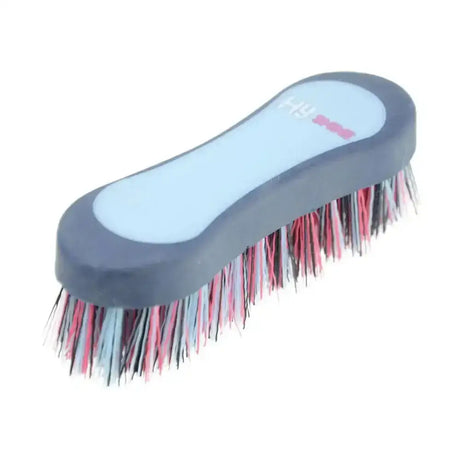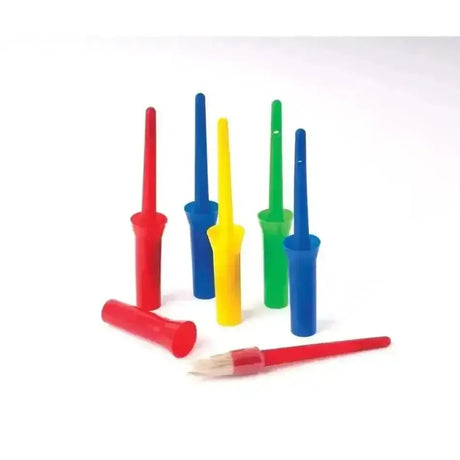Horse Hoof Care
Proper horse hoof care is essential for the overall health and performance of horses. Regular maintenance and attention to equine hoof health can prevent lameness, improve comfort, and enhance a horse's ability to perform various activities. Here are the key aspects of horse hoof care:
Hoof care is a critical component of equine health management, involving regular trimming, shoeing when necessary, and addressing any issues that may arise. A horse's hooves grow continuously, much like human fingernails, and require consistent attention to maintain their proper shape and function. Neglecting hoof care can lead to a variety of problems, including cracks, infections, and structural imbalances that can affect the horse's gait and overall well-being.
Professional farriers play a crucial role in horse hoof care, using their expertise to assess each horse's individual needs and provide appropriate trimming and shoeing services. They work closely with horse owners and veterinarians to develop comprehensive hoof care plans that take into account factors such as the horse's age, breed, activity level, and any existing health conditions.
In addition to regular professional care, daily hoof inspection and cleaning by horse owners or caretakers are vital components of a thorough hoof care routine. This practice helps identify potential issues early on and ensures that debris and moisture are not trapped within the hoof, which can lead to bacterial or fungal infections.
Nutrition also plays a significant role in horse hoof health. A balanced diet rich in essential nutrients, particularly biotin, zinc, and copper, can promote strong hoof growth and resilience. Some horses may benefit from specialized hoof supplements to support optimal hoof condition, especially if they have a history of hoof problems or are subjected to high-performance activities.
Environmental factors can greatly impact hoof health, and proper management of a horse's living conditions is crucial. Providing clean, dry footing and avoiding prolonged exposure to wet or muddy conditions can help prevent common hoof ailments such as thrush or white line disease. Regular exercise on varied terrain can also contribute to stronger, healthier hooves by promoting blood circulation and natural wear patterns.
By prioritizing comprehensive horse hoof care, owners and caretakers can ensure their equine companions remain sound, comfortable, and capable of enjoying a long, active life. Regular attention to hoof health is an investment in the horse's overall well-being and performance potential.
Proper hoof care is essential for maintaining a horse's overall health and soundness. The condition of a horse's hooves directly affects its ability to move comfortably and perform tasks. Neglecting hoof care can lead to serious issues such as lameness, infections, and poor performance. Below are key aspects of horse hoof care, tips for keeping hooves in top shape, and common hoof problems to watch for.
1. Regular Farrier Visits:
-
Frequency: Horses typically require farrier visits every 4 to 8 weeks, depending on their hoof growth rate, level of work, and individual needs. Hooves grow about 1/4 to 1/2 inch per month, so regular trimming is necessary to prevent overgrowth, which can lead to imbalances and strain.
-
Trimming: Regular trimming maintains the correct shape and balance of the hoof. This ensures even distribution of the horse's weight and prevents uneven wear that can lead to stress on the legs and joints.
-
Shoeing: If your horse wears shoes, your farrier will check for wear and damage and replace them as needed. Horses that perform in high-impact sports, such as jumping or dressage, or that have certain hoof issues may benefit from shoes to protect and support their hooves.
2. Daily Hoof Inspection and Cleaning:
-
Pick Out Hooves Daily: Use a hoof pick to clean out dirt, manure, and debris from the sole and frog. This helps prevent thrush (a bacterial infection) and allows you to inspect for injuries, cracks, or embedded objects like stones or nails.
-
Inspect for Problems: While cleaning, look for signs of cracks, heat, foul odors, or sensitivity. If your horse shows discomfort or if you notice abnormalities, contact a farrier or veterinarian for further inspection.
3. Hoof Moisture Balance:
-
Avoid Excessive Wet or Dry Conditions: Horses' hooves need a good balance of moisture to remain strong and healthy. Hooves that are too dry can crack, while overly wet conditions can make hooves soft and prone to damage.
- In dry environments, apply a hoof conditioner or moisturizer to prevent cracking. Ensure that the product contains natural oils rather than petroleum-based products, which can seal moisture out.
- In wet conditions, ensure the horse's living environment is dry and clean to prevent soft hooves and conditions like thrush. Use hoof hardeners in excessively wet environments to promote healthy, strong hooves.
4. Balanced Diet for Hoof Health:
-
Nutrition: A balanced diet rich in vitamins and minerals is crucial for good hoof health. Biotin, methionine, zinc, and omega-3 fatty acids are particularly important for strong, resilient hooves.
-
Supplements: If your horse has brittle or weak hooves, adding a hoof supplement that contains biotin, zinc, and amino acids can help improve hoof quality. Always consult your veterinarian before introducing new supplements to ensure they are appropriate for your horse's needs.
5. Exercise and Movement:
-
Turnout: Regular movement promotes circulation within the hoof and helps prevent problems like contracted heels and poor hoof growth. Horses in regular turnout will naturally wear down their hooves, reducing the risk of overgrowth between farrier visits.
-
Exercise: Regular exercise also encourages good hoof growth and strengthens the hoof structure. Horses that are stalled or do not have enough movement may have weaker hooves due to reduced circulation.
6. Environmental Management:
-
Clean Living Areas: Ensure that your horse's stall or paddock is kept clean and dry to prevent hoof infections like thrush and white line disease. Prolonged exposure to moisture, manure, or urine can damage the hoof horn and lead to infection.
-
Proper Footing: Avoid environments where your horse may be exposed to extremely hard or rocky surfaces that can cause bruising or injury. Similarly, excessively soft, muddy ground can make the hooves more susceptible to bacterial infections.
7. Hoof Boots:
-
Temporary Protection: Hoof boots can be useful for protecting a horse’s hooves, especially during times when the horse is barefoot but needs extra protection, such as during trail rides or on rough terrain. They can also provide support and cushioning for horses recovering from injury or laminitis.
Common Hoof Problems:
1. Thrush:
-
What It Is: Thrush is a bacterial infection that affects the frog and surrounding areas of the hoof. It is often caused by dirty, moist environments and poor hoof care.
-
Symptoms: Foul odor, black discharge from the frog, tenderness, and degeneration of the frog.
-
Treatment: Clean the hooves daily and apply a thrush treatment. Ensure the horse’s living conditions are dry and clean. Severe cases may require veterinary care.
2. Hoof Cracks:
-
What It Is: Cracks can develop in the hoof wall due to dryness, improper trimming, or trauma.
-
Symptoms: Vertical splits or cracks in the hoof wall, which may extend from the ground up or from the coronary band down.
-
Treatment: Regular trimming by a farrier can help prevent cracks. Moisturizing the hooves in dry conditions and addressing the underlying causes (like imbalances in the hoof) are key. Deep cracks may require corrective shoeing or farrier intervention.
3. Abscesses:
-
What It Is: An abscess occurs when bacteria become trapped inside the hoof, causing a painful pocket of infection. This often happens due to a puncture or bruise in the sole or hoof wall.
-
Symptoms: Sudden, severe lameness, heat in the hoof, and a visible swelling or rupture at the coronary band.
-
Treatment: The farrier or veterinarian will open the abscess to drain it, then recommend soaking the hoof in an Epsom salt solution to encourage drainage. Keep the hoof bandaged and clean until it heals.
4. Laminitis:
-
What It Is: Laminitis is a serious and painful inflammation of the laminae—the soft tissues inside the hoof that connect the hoof wall to the coffin bone. It can be caused by metabolic conditions, obesity, overfeeding, or excessive concussion to the hooves.
-
Symptoms: Lameness, reluctance to move, heat in the hooves, and a "rocked back" stance to relieve pressure on the toes.
-
Treatment: Laminitis requires immediate veterinary attention. Treatment involves managing pain and inflammation, addressing the underlying cause, and supporting the hooves with special shoeing or padding.
5. White Line Disease:
-
What It Is: This is a bacterial or fungal infection that attacks the white line (the junction between the hoof wall and sole), causing the hoof wall to separate from the underlying structures.
-
Symptoms: A widening of the white line, crumbly material in the hoof, and separation of the hoof wall.
-
Treatment: The affected areas must be resected (cut away) by a farrier to remove the infected tissue. The hoof should be kept clean and dry, and topical treatments may be applied to kill the infection.
6. Navicular Syndrome:
-
What It Is: Navicular syndrome involves inflammation or degeneration of the navicular bone and surrounding structures in the horse's foot, often causing chronic lameness.
-
Symptoms: Lameness, particularly in the front feet, stiffness, and a tendency to land toe-first when walking or trotting.
-
Treatment: While there is no cure for navicular syndrome, treatment involves managing pain, corrective shoeing to provide heel support, and potentially using anti-inflammatory medications.
Conclusion:
Consistent, attentive hoof care is vital to keeping your horse healthy, sound, and performing well. By scheduling regular farrier visits, maintaining a clean and dry environment, and inspecting and cleaning your horse’s hooves daily, you can prevent many common hoof problems. Proper nutrition, exercise, and environmental management all contribute to strong, healthy hooves that can withstand the rigors of everyday life. If hoof problems do arise, early detection and intervention by a farrier or veterinarian can make a significant difference in recovery and long-term health.


















